
Choosing the right plants for your garden is an essential part of creating an outdoor space that is both attractive and sustainable. A well-planned garden requires thought about factors like sunlight, soil quality, water availability, and climate conditions. Many homeowners and gardening enthusiasts face challenges when selecting plants, often unsure which varieties will thrive and complement their existing garden design. By taking time to understand your garden’s specific needs, you can select plants that provide color, texture, and seasonal interest throughout the year. This guide outlines practical tips for picking the perfect plants to suit your garden space, helping you achieve a vibrant, healthy, and visually appealing landscape without unnecessary effort or expense.
Assess Your Garden Conditions
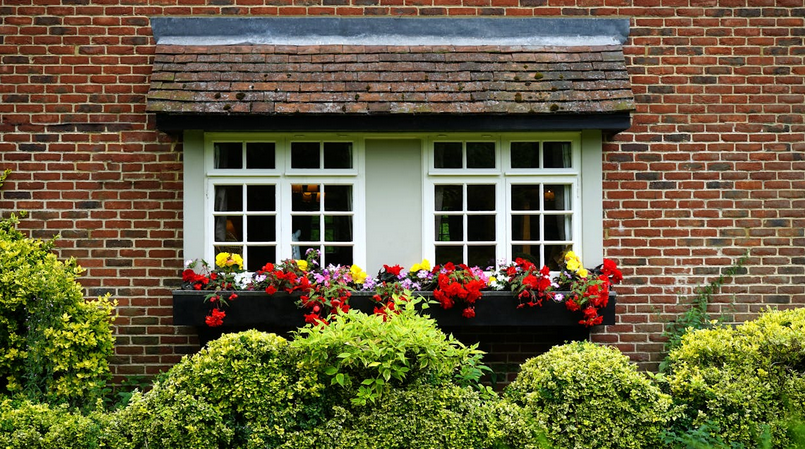
Before selecting plants, it is important to evaluate your garden’s environment. Consider sunlight exposure, soil type, drainage, and prevailing weather conditions. Some plants thrive in full sun, while others require partial shade or protection from strong winds. Testing soil pH and nutrient levels can also guide you toward plant types that will perform well. By understanding these basic environmental conditions, you can avoid choosing plants that may struggle or require extensive maintenance, ultimately creating a garden that flourishes naturally.
Determine Your Garden Style and Theme
Your garden’s design style can influence the types of plants you choose. For example, a formal garden may benefit from structured shrubs and topiary, while a cottage-style garden can include flowering perennials and climbing vines. Consider the visual effect you want to achieve, including color palettes, plant heights, and textures. Planning around a cohesive theme helps maintain harmony throughout the garden and prevents the space from appearing cluttered or unbalanced. By aligning plant selection with your intended style, you create a visually pleasing and well-organized outdoor area.
Consider Plant Maintenance Needs

Different plants need different levels of care, so it is essential to consider your ability to maintain them. Some species demand regular pruning, fertilizing, and pest control, while others are hardy and low-maintenance. Choosing plants suited to your time availability and gardening experience can save effort and reduce frustration. For busy homeowners, incorporating drought-tolerant or native plants may be an effective way to enjoy a beautiful garden without excessive upkeep. Balancing aesthetic appeal with practicality ensures your garden remains manageable and enjoyable throughout the seasons.
Mix Perennials and Annuals for Variety
Combining perennials and annuals can provide both long-term structure and seasonal interest in your garden. Perennials offer stability and recurring blooms year after year, while annuals can introduce vibrant colors and diversity for specific seasons. This combination allows you to experiment with textures, heights, and colors, creating a dynamic garden environment. Strategically placing annuals alongside perennials can fill gaps and provide a continuous display of flowers and foliage, enhancing the visual appeal without the need for frequent replanting.
Plan for Growth and Space
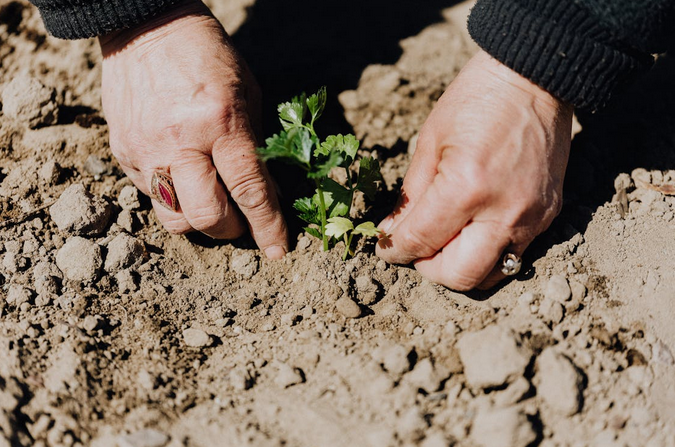
When choosing plants, examine their mature size and growth patterns. Planting too closely can result in overcrowding, competition for resources, and reduced airflow, which may increase the risk of disease. Providing adequate spacing allows each plant to develop fully and creates a balanced layout. Additionally, think about vertical growth for climbing plants or tall perennials that may overshadow smaller species. Proper planning helps maintain garden health, reduces maintenance needs, and ensures that all plants have the opportunity to thrive in their designated spots.
Selecting suitable plants for your garden involves careful consideration of several important factors. Start by assessing your garden conditions, including sunlight, soil, and climate, to choose plants that can flourish naturally. Align your plant choices with the overall garden style and theme to create a harmonious outdoor space. Consider maintenance requirements to match your availability and experience, and combine perennials with annuals to maintain visual interest throughout the year. Finally, plan for plant growth and spacing to prevent overcrowding and promote a healthy, balanced garden. Following these five tips will help you develop a vibrant, thriving garden that provides beauty, enjoyment, and lasting satisfaction.…





 To successfully grow your Twitter followers in India, it is crucial to understand your target audience. Each region, culture, and demographic within the country has its own unique preferences and interests. By deeply understanding who you are trying to reach, you can tailor your content and engage with them more effectively. Start by conducting thorough research on the demographics and interests of your potential followers. This will help in creating targeted content that resonates with them. Pay attention to their age group, location, language preference, and topics they are interested in.
To successfully grow your Twitter followers in India, it is crucial to understand your target audience. Each region, culture, and demographic within the country has its own unique preferences and interests. By deeply understanding who you are trying to reach, you can tailor your content and engage with them more effectively. Start by conducting thorough research on the demographics and interests of your potential followers. This will help in creating targeted content that resonates with them. Pay attention to their age group, location, language preference, and topics they are interested in. Promoting your Twitter account is crucial in growing your followers and expanding your reach. You can employ several strategies to effectively promote your account and increase your visibility on the platform. Make sure to include a link to your Twitter profile in all of your other online platforms, such as your website, blog, or email signature. This way, anyone across these platforms will have an easy way to follow you on Twitter. Additionally, leverage the power of hashtags. Research popular hashtags relevant to your content and industry and use them in your tweets.
Promoting your Twitter account is crucial in growing your followers and expanding your reach. You can employ several strategies to effectively promote your account and increase your visibility on the platform. Make sure to include a link to your Twitter profile in all of your other online platforms, such as your website, blog, or email signature. This way, anyone across these platforms will have an easy way to follow you on Twitter. Additionally, leverage the power of hashtags. Research popular hashtags relevant to your content and industry and use them in your tweets.

 Online collaborative study groups offer a fantastic opportunity to connect with fellow students and benefit from shared knowledge and support. Join online platforms or forums where students discuss specific subjects or exams.
Online collaborative study groups offer a fantastic opportunity to connect with fellow students and benefit from shared knowledge and support. Join online platforms or forums where students discuss specific subjects or exams.


 With the right app, you can easily
With the right app, you can easily 
 If you’re like me, who travels a lot, then you know how frustrating it is to not be able to communicate with people who don’t speak your language. Well, there’s no need to worry anymore. With the right app, you can easily translate multiple languages in real-time. And the best part is that it doesn’t matter if you’re offline. The app will still work just fine. So if you’re looking for a way to communicate with people from all over the world, this is it.
If you’re like me, who travels a lot, then you know how frustrating it is to not be able to communicate with people who don’t speak your language. Well, there’s no need to worry anymore. With the right app, you can easily translate multiple languages in real-time. And the best part is that it doesn’t matter if you’re offline. The app will still work just fine. So if you’re looking for a way to communicate with people from all over the world, this is it.

 Another important factor to consider is customer service. You want to choose a company that’s easy to work with and responsive to your needs. Read online reviews and see what other customers have said about their experience. If you have any specific questions, don’t hesitate to contact the company directly and ask. Keep these tips in mind, and you’ll be sure to find the best custom t-shirt printing service for your needs. With a little research, you can find a company that will give you high-quality shirts at a price you can afford. So get started today.…
Another important factor to consider is customer service. You want to choose a company that’s easy to work with and responsive to your needs. Read online reviews and see what other customers have said about their experience. If you have any specific questions, don’t hesitate to contact the company directly and ask. Keep these tips in mind, and you’ll be sure to find the best custom t-shirt printing service for your needs. With a little research, you can find a company that will give you high-quality shirts at a price you can afford. So get started today.…
 One of the best things you can do for yourself when overcoming a drug addiction is to seek help from a drug rehab facility. These facilities are designed to help people like you overcome their addictions. They will provide you with the resources and support you need to get through this challenging time in your life. Additionally, a drug rehab facility will also help you to learn more about your addiction and how to overcome it. It is an essential step in the right direction.
One of the best things you can do for yourself when overcoming a drug addiction is to seek help from a drug rehab facility. These facilities are designed to help people like you overcome their addictions. They will provide you with the resources and support you need to get through this challenging time in your life. Additionally, a drug rehab facility will also help you to learn more about your addiction and how to overcome it. It is an essential step in the right direction. When trying to overcome drug addiction, it is essential to take care of your body. Exercise and meditation are two great ways to do this. Exercise releases endorphins, which can help to improve your mood and reduce stress. Additionally, it helps to keep your body healthy. Meditation can also help to reduce stress and anxiety. It is a great way to calm your mind and focus on recovery. Both exercise and meditation can be great tools to help you overcome your drug addiction.
When trying to overcome drug addiction, it is essential to take care of your body. Exercise and meditation are two great ways to do this. Exercise releases endorphins, which can help to improve your mood and reduce stress. Additionally, it helps to keep your body healthy. Meditation can also help to reduce stress and anxiety. It is a great way to calm your mind and focus on recovery. Both exercise and meditation can be great tools to help you overcome your drug addiction. Last but not least, it is essential to never give up on yourself. Overcoming a drug addiction is a complex process, but it is possible. If you find yourself struggling, reach out for help. There are many resources available to help you overcome your addiction. Additionally, remember that relapse is part of the recovery process. If you do relapse, don’t give up. Get back on track and continue working towards recovery.
Last but not least, it is essential to never give up on yourself. Overcoming a drug addiction is a complex process, but it is possible. If you find yourself struggling, reach out for help. There are many resources available to help you overcome your addiction. Additionally, remember that relapse is part of the recovery process. If you do relapse, don’t give up. Get back on track and continue working towards recovery.
 In every accident or situation that involves injuries or some form of trauma, the very first step is to assess and evaluate what has happened. This is also true if you have been injured in an accident
In every accident or situation that involves injuries or some form of trauma, the very first step is to assess and evaluate what has happened. This is also true if you have been injured in an accident 


 While telescopic rods are essential in angling, it is surprising that most anglers are not aware of them. If you fall in the category of those who do not know, a telescopic rod is a special type of angling rod with top blanks that collapse into the preceding blanks. Like the old seafaring telescope, telescopic rods are pretty compact and easy to carry during your fishing expeditions.
While telescopic rods are essential in angling, it is surprising that most anglers are not aware of them. If you fall in the category of those who do not know, a telescopic rod is a special type of angling rod with top blanks that collapse into the preceding blanks. Like the old seafaring telescope, telescopic rods are pretty compact and easy to carry during your fishing expeditions.
 Aluminum metal provides excellent malleability, a fact that makes it a worthy contender in a host of applications today. Most aluminum products that you see out there are products of an extrusion process. Ideally, the extrusion process involves heating billets and ramming them under high pressure through steel dies to produce specific shapes.
Aluminum metal provides excellent malleability, a fact that makes it a worthy contender in a host of applications today. Most aluminum products that you see out there are products of an extrusion process. Ideally, the extrusion process involves heating billets and ramming them under high pressure through steel dies to produce specific shapes.




 There are a variety of renewable energy sources. Solar energy is the most common type of renewable energy. If you want to adopt renewable energy in your home, using solar energy is the simplest way to start.
There are a variety of renewable energy sources. Solar energy is the most common type of renewable energy. If you want to adopt renewable energy in your home, using solar energy is the simplest way to start. It is important to think about reliability when it comes to renewable energy. If you want to produce renewable energy in your home, it might not be reliable at first.
It is important to think about reliability when it comes to renewable energy. If you want to produce renewable energy in your home, it might not be reliable at first.

 Forklifts have a wide range of applications in nearly all industries. It can be used in a construction site, warehouse, or any other storage facility where heavy lifting is a part of the daily activities. That makes forklift trucks among the most important investments that you can make if you own a storage facility. It will make work easier and increase efficiency. There are many different types of forklift trucks that you can invest in, some of which are highlighted below.
Forklifts have a wide range of applications in nearly all industries. It can be used in a construction site, warehouse, or any other storage facility where heavy lifting is a part of the daily activities. That makes forklift trucks among the most important investments that you can make if you own a storage facility. It will make work easier and increase efficiency. There are many different types of forklift trucks that you can invest in, some of which are highlighted below.

 Step 3: Add a Cover Page
Step 3: Add a Cover Page
 The first thing is to check the taste of your vaping juice. You need to consider purchasing a flavor that appeals to you. Some people love fruity flavors while others love minty flavors. The good news is that we now have a huge variety of flavors.
The first thing is to check the taste of your vaping juice. You need to consider purchasing a flavor that appeals to you. Some people love fruity flavors while others love minty flavors. The good news is that we now have a huge variety of flavors.


 Convenience
Convenience

 Disney Calendar
Disney Calendar



 and towel. The work of the wet hand towel is to clean your hands. After you clean your hands, you can put the towel back.
and towel. The work of the wet hand towel is to clean your hands. After you clean your hands, you can put the towel back. wasabi
wasabi One of the benefits of digital marketing is that you can get measurable results. This is unlike the traditional forms of advertisement which you could not exactly tell the number of people who have seen the ad.
One of the benefits of digital marketing is that you can get measurable results. This is unlike the traditional forms of advertisement which you could not exactly tell the number of people who have seen the ad. Digital marketing is beneficial because it is easy to optimize. We have several tools that are used to check the progress or effectiveness of a particular type of advertisements.
Digital marketing is beneficial because it is easy to optimize. We have several tools that are used to check the progress or effectiveness of a particular type of advertisements.
 vious SEO campaigns. Also, do not forget to ask them for their past case studies or their previous work together with their results. Therefore, by reviewing this, you are in a good position of understanding how essential their services will be. It is recommended that you avoid a firm which does not offer or provides their samples of their experience or work. During this procedure, ensure that you verify some of the credentials and expertise of the people you are willing to work with. It is advisable also to contact two or more clients of the SEO firm you are reviewing. Know some of the questions you are required to ask them and you can even ask them if they are satisfied with the services of the firm.
vious SEO campaigns. Also, do not forget to ask them for their past case studies or their previous work together with their results. Therefore, by reviewing this, you are in a good position of understanding how essential their services will be. It is recommended that you avoid a firm which does not offer or provides their samples of their experience or work. During this procedure, ensure that you verify some of the credentials and expertise of the people you are willing to work with. It is advisable also to contact two or more clients of the SEO firm you are reviewing. Know some of the questions you are required to ask them and you can even ask them if they are satisfied with the services of the firm. An SEO firm can achieve the first ranking. But since the search engines keep on changing daily, you will not stay at the top position always. That is why it is recommended that you avoid some of these firms that will promise number one ranking.…
An SEO firm can achieve the first ranking. But since the search engines keep on changing daily, you will not stay at the top position always. That is why it is recommended that you avoid some of these firms that will promise number one ranking.… machines. These machines have their strengths and weaknesses, which determine their area of application. Ideally, the choice of strapping machine is influenced by the nature and volume of goods you will be handling. So, before you start shopping for banding machine, here are some popular classifications of strapping machines.
machines. These machines have their strengths and weaknesses, which determine their area of application. Ideally, the choice of strapping machine is influenced by the nature and volume of goods you will be handling. So, before you start shopping for banding machine, here are some popular classifications of strapping machines. The strapping machines do not require an operator to function. As such, they are mostly integrated into the production line. Once the process is complete, they can automatically strap the package on its own. These units are efficient and are used in settings with high strapping demands. They are also known to be effective and have minimum wastages.
The strapping machines do not require an operator to function. As such, they are mostly integrated into the production line. Once the process is complete, they can automatically strap the package on its own. These units are efficient and are used in settings with high strapping demands. They are also known to be effective and have minimum wastages.






 In addition to object weight, it is also necessary to measure the lengths of the object that the crane will lift to ensure that it is capable of carrying all operations smoothly since a failure in lifting can lead to endangerment of employees and financial loss.
In addition to object weight, it is also necessary to measure the lengths of the object that the crane will lift to ensure that it is capable of carrying all operations smoothly since a failure in lifting can lead to endangerment of employees and financial loss.





 installed to watch videos.
installed to watch videos. of downloading even 1 Mbs. This is necessary to avoid various problems with the skipping and buffering of movies as you want. There are many tools and websites to help you test the speed of your internet.
of downloading even 1 Mbs. This is necessary to avoid various problems with the skipping and buffering of movies as you want. There are many tools and websites to help you test the speed of your internet.
 your comfort expectation levels. Most studies have shown that workers spend most of their days at work sitting. A kneeling stool keeps you in the correct position and prevents pain from occurring. It is a perfect addition to any workspace for anyone, new or routinely driven health gurus.
your comfort expectation levels. Most studies have shown that workers spend most of their days at work sitting. A kneeling stool keeps you in the correct position and prevents pain from occurring. It is a perfect addition to any workspace for anyone, new or routinely driven health gurus. things seem to be easily set, and the kneeling chair is no exception. Any lumbar expert will agree that the angle is correct, and the magic comfort and healing results are because of its design. The kneeling stool comes in many styles and craftsmanship all fit for any consumer with all ranges of budgets, modern or simple styles. It is an easily adjustable piece of furniture that fits in any office space, home, small apartment or vast office area of a large modern suburban residence.
things seem to be easily set, and the kneeling chair is no exception. Any lumbar expert will agree that the angle is correct, and the magic comfort and healing results are because of its design. The kneeling stool comes in many styles and craftsmanship all fit for any consumer with all ranges of budgets, modern or simple styles. It is an easily adjustable piece of furniture that fits in any office space, home, small apartment or vast office area of a large modern suburban residence. . The second option is simple, quick, easy, convenient, and costs comparatively less. As well as this process will give you, a relaxed peace if you.
. The second option is simple, quick, easy, convenient, and costs comparatively less. As well as this process will give you, a relaxed peace if you. ice
ice
 pipes and block the pipe. As a result, the grease will damage your pipe. You can opt for mixing the grease with detergent before you pour it down the drain.
pipes and block the pipe. As a result, the grease will damage your pipe. You can opt for mixing the grease with detergent before you pour it down the drain. Monitoring your bill is a sure way to identify the problem on time. In case the bill increases by a very large amount then it means that there is a problem somewhere, you should not ignore such an indication.
Monitoring your bill is a sure way to identify the problem on time. In case the bill increases by a very large amount then it means that there is a problem somewhere, you should not ignore such an indication.
 repairs, as well as maintenance both for your home and for your business premises. If you are having doubts with your current electrician, the team of electricians from this facility will not give you even the slimmest reason to doubt their work.
repairs, as well as maintenance both for your home and for your business premises. If you are having doubts with your current electrician, the team of electricians from this facility will not give you even the slimmest reason to doubt their work. By relying on its great establishment, the firm has reduced the cost of electrical services for its clients. It makes the electrical facility one of the companies charging reasonable prices in the country.
By relying on its great establishment, the firm has reduced the cost of electrical services for its clients. It makes the electrical facility one of the companies charging reasonable prices in the country.
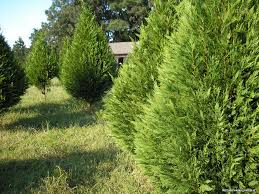 In fact, its ability to grow very fast makes people worry about it. The tree can attain a massive height. Some tree experts can warn you of planting it if you do not have required area. This is true if you are considering about planting it in residential premises.
In fact, its ability to grow very fast makes people worry about it. The tree can attain a massive height. Some tree experts can warn you of planting it if you do not have required area. This is true if you are considering about planting it in residential premises.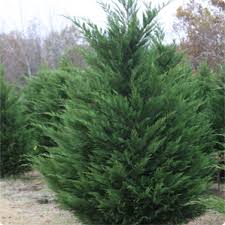 comfortably plant this tree in any given environment whether it is shady or hot. This plant can exceed your expectations. Always you should maintain at least ten feet when you are sowing the seeds.
comfortably plant this tree in any given environment whether it is shady or hot. This plant can exceed your expectations. Always you should maintain at least ten feet when you are sowing the seeds.
 college loan relief. It is true college education is important, and this is why a lot of people are looking into a masters degree. In addition, employers are considering candidates with master’s degree for positions in their companies. The high cost of education means that more years of your student loan debt can cripple your family funds.
college loan relief. It is true college education is important, and this is why a lot of people are looking into a masters degree. In addition, employers are considering candidates with master’s degree for positions in their companies. The high cost of education means that more years of your student loan debt can cripple your family funds. consolidating student loans. Other than this, debts from private lenders cannot provide you with the relief you need from the federal loans.
consolidating student loans. Other than this, debts from private lenders cannot provide you with the relief you need from the federal loans.

 are going to hire a
are going to hire a 
 more than one wedding during the wedding days. It is, therefore, important to seek if the venue is available for your wedding. The venue might have been booked for another wedding or event.
more than one wedding during the wedding days. It is, therefore, important to seek if the venue is available for your wedding. The venue might have been booked for another wedding or event. Make queries on the availability of the in-house caterer. If there is an in-house caterer find out whether it is must use his services, or you can source for an outsider.
Make queries on the availability of the in-house caterer. If there is an in-house caterer find out whether it is must use his services, or you can source for an outsider. Right choices of client gifts let your clients know that their loyalty and patronage have been appreciated. Valuing them strengthens your business relationship with them. When choosing business gift ideas they should be according to their personal preferences to make them impressed with your thoughtfulness and sincerity.
Right choices of client gifts let your clients know that their loyalty and patronage have been appreciated. Valuing them strengthens your business relationship with them. When choosing business gift ideas they should be according to their personal preferences to make them impressed with your thoughtfulness and sincerity.



 person in another country with just a click, there the same way, the same applies to marketing your business online. It will enable you to showcase your services and products to people who are miles away. Therefore, internet marketing is very important for a growing business.
person in another country with just a click, there the same way, the same applies to marketing your business online. It will enable you to showcase your services and products to people who are miles away. Therefore, internet marketing is very important for a growing business. products. Therefore, you need to collect vital customer data, and the right place of doing that is online.
products. Therefore, you need to collect vital customer data, and the right place of doing that is online.
 Multi-tools are being used worldwide, and they have been popular because of their handiness especially when it comes to activities that are done outside the house. So, whether you are thinking about going on a camping, hiking or mountain climbing, and any other outdoor activities, the two most important things that you should not forget to take with you is a multi-tool knife and a flashlight.
Multi-tools are being used worldwide, and they have been popular because of their handiness especially when it comes to activities that are done outside the house. So, whether you are thinking about going on a camping, hiking or mountain climbing, and any other outdoor activities, the two most important things that you should not forget to take with you is a multi-tool knife and a flashlight. The Fire Talon multi-too knife is made up of black oxide stainless steel, and so, you are sure that it is durable and heavy duty. You can count on it in whatever task you need to do. It also has built-in rubber inlays in the handle to ensure a better control and more comfortable grip.
The Fire Talon multi-too knife is made up of black oxide stainless steel, and so, you are sure that it is durable and heavy duty. You can count on it in whatever task you need to do. It also has built-in rubber inlays in the handle to ensure a better control and more comfortable grip.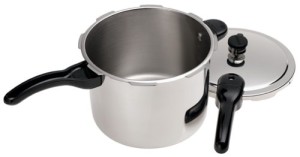 A pressure cooker is one of the most important devices that you should have in your kitchen. You can use this cooking device for cooking any foods faster than any other traditional cooking units.
A pressure cooker is one of the most important devices that you should have in your kitchen. You can use this cooking device for cooking any foods faster than any other traditional cooking units.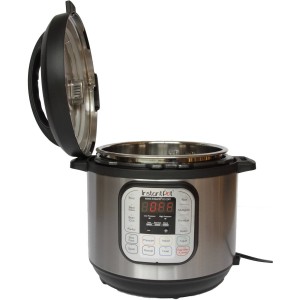 It is recommended for you to compare several pressure cookers, so you can take a look at all available units and their features. Different products usually have their own features and also benefits for all customers. Before you decide to select the best unit for yourself, you can also take a look at some available reviews that come from other users. These reviews should be able to help you find the best pressure cooker that has good reputation on the market these days.…
It is recommended for you to compare several pressure cookers, so you can take a look at all available units and their features. Different products usually have their own features and also benefits for all customers. Before you decide to select the best unit for yourself, you can also take a look at some available reviews that come from other users. These reviews should be able to help you find the best pressure cooker that has good reputation on the market these days.…



 another although the intention is always clear. These secretly installed devices are designed to help with investigation and protection as opposed to malicious intent and espionage. Essentially, anyone is allowed to buy and use spy cameras for whatever purpose other than evil intent. Parents, for instance, can use these cameras to keep an eye on activities of their children and also to protect their homes. Burglars have become very careful and often make away with visible camera systems to ensure there is no trace of their activities. Spy cameras can be kept in secret places where only the owner knows. If you want to know if your babysitter is really taking good care of your baby, a spy camera can go a long way in helping you track home activities. Nonetheless, its use should be limited to security and protection.
another although the intention is always clear. These secretly installed devices are designed to help with investigation and protection as opposed to malicious intent and espionage. Essentially, anyone is allowed to buy and use spy cameras for whatever purpose other than evil intent. Parents, for instance, can use these cameras to keep an eye on activities of their children and also to protect their homes. Burglars have become very careful and often make away with visible camera systems to ensure there is no trace of their activities. Spy cameras can be kept in secret places where only the owner knows. If you want to know if your babysitter is really taking good care of your baby, a spy camera can go a long way in helping you track home activities. Nonetheless, its use should be limited to security and protection. to
to 
 where you are. It has countless titles, some of which are older movies and even the latest releases. You will not be left without anything to watch as you will have a choice of the
where you are. It has countless titles, some of which are older movies and even the latest releases. You will not be left without anything to watch as you will have a choice of the  Presently the app is supported on iOS devices including the
Presently the app is supported on iOS devices including the 
 The third step is your local fence business will certainly come and install your new fence. When they do this, you must walk around and inspect the fence for things you can see that might be wrong.
The third step is your local fence business will certainly come and install your new fence. When they do this, you must walk around and inspect the fence for things you can see that might be wrong.
 breasts of their dreams.
breasts of their dreams. These herbs consist of high concentrations of phytoestrogens which are plant-based estrogens that stimulate the natural process of bust development. Phytoestrogens are plant based estrogens that activate breast growth just like estrogen hormone does during adolescence or pregnancy. They have been tested and proven to be efficient, resulting in the long-term bust size increase. When you are choosing a breast product, you ought to guarantee that it includes all the vital, active ingredients to prevent disappointment. Therefore, you must take some precautions when buying theses products and only go for reputed brands and suppliers.
These herbs consist of high concentrations of phytoestrogens which are plant-based estrogens that stimulate the natural process of bust development. Phytoestrogens are plant based estrogens that activate breast growth just like estrogen hormone does during adolescence or pregnancy. They have been tested and proven to be efficient, resulting in the long-term bust size increase. When you are choosing a breast product, you ought to guarantee that it includes all the vital, active ingredients to prevent disappointment. Therefore, you must take some precautions when buying theses products and only go for reputed brands and suppliers.
 impression that these supplements will certainly work overnight.
impression that these supplements will certainly work overnight. Some items will provide an outcome of small weight loss however the prospective negative effects of these products have the tendency to eclipse the real weight reduction. Specific products have even been prohibited, however, can still be found in some chemists. Products like this should be avoided as in some cases they can show deadly. There are likewise numerous natural supplements available in the market. However, many of these have conflicting results or insufficient proof to show their claims. These supplements are referred to as fat burners, and they work by increasing the body’s metabolic process. Doctors do recommend these to clients, however, the client’s progress is monitored closely. Due to the absence of labelling of active ingredients on these products, severe increase in hypertension and heart-related problems, use of these supplements is controlled by the FDA.…
Some items will provide an outcome of small weight loss however the prospective negative effects of these products have the tendency to eclipse the real weight reduction. Specific products have even been prohibited, however, can still be found in some chemists. Products like this should be avoided as in some cases they can show deadly. There are likewise numerous natural supplements available in the market. However, many of these have conflicting results or insufficient proof to show their claims. These supplements are referred to as fat burners, and they work by increasing the body’s metabolic process. Doctors do recommend these to clients, however, the client’s progress is monitored closely. Due to the absence of labelling of active ingredients on these products, severe increase in hypertension and heart-related problems, use of these supplements is controlled by the FDA.…
 any other place where the couple will be having to be given special care. The planning of this decoration is normally taken care of by wedding planners if you ae hiring one. They will consider how the bride and groom want their wedding to look and with the ideas given they will go about formulating a great decoration plan. It is therefore very important to understand the couple’s mood and desires when making choices on the decors that are added to the venue.
any other place where the couple will be having to be given special care. The planning of this decoration is normally taken care of by wedding planners if you ae hiring one. They will consider how the bride and groom want their wedding to look and with the ideas given they will go about formulating a great decoration plan. It is therefore very important to understand the couple’s mood and desires when making choices on the decors that are added to the venue. account. The decor should not be too much or too little and must make a subtle but graceful appearance for the whole function.
account. The decor should not be too much or too little and must make a subtle but graceful appearance for the whole function. We also do offer a wide range of personalised china that makes a very unique gift idea for your boy or girl. Needless to say we do package fragile items with utmost care make sure they arrive safe every time.Personalized Hand-Painted Gift Plate. You might be overjoyed by the beautiful and hand painted designs, every plate actually personalized to your personal needs. Personalized Gift Plate Christening / Naming/ Baptism / Birth Day.
We also do offer a wide range of personalised china that makes a very unique gift idea for your boy or girl. Needless to say we do package fragile items with utmost care make sure they arrive safe every time.Personalized Hand-Painted Gift Plate. You might be overjoyed by the beautiful and hand painted designs, every plate actually personalized to your personal needs. Personalized Gift Plate Christening / Naming/ Baptism / Birth Day. Teddy & Stars Pink Naming-8. The cute pink teddy as well as the stars design adorning this 8″ bone chinaplate make it perfect for that Naming Day of any precious little girl. Chili & Bubble’s Christening Plate. The cute Chili and Bubbles family adorning this 8″ bone chinaplate makes it perfect for that Christening Day of your precious little one.Church Confirmation 8.
Teddy & Stars Pink Naming-8. The cute pink teddy as well as the stars design adorning this 8″ bone chinaplate make it perfect for that Naming Day of any precious little girl. Chili & Bubble’s Christening Plate. The cute Chili and Bubbles family adorning this 8″ bone chinaplate makes it perfect for that Christening Day of your precious little one.Church Confirmation 8.
 on the market. Models range from conventional machines, low-end to sophisticated machines, high-end. In fact, these machines can be connected to computers. All brands and models of sewing machines differ in features, performances, and prices. Therefore, selecting a sewing machine demands careful attention to different aspects of the machine.
on the market. Models range from conventional machines, low-end to sophisticated machines, high-end. In fact, these machines can be connected to computers. All brands and models of sewing machines differ in features, performances, and prices. Therefore, selecting a sewing machine demands careful attention to different aspects of the machine. sewing machines. Such machines have essential and basic features. On the other hand, experienced and skilled sewer should opt for machines that have sophisticated features. If it is a kid, you can buy toy sewing machine.
sewing machines. Such machines have essential and basic features. On the other hand, experienced and skilled sewer should opt for machines that have sophisticated features. If it is a kid, you can buy toy sewing machine.
 decide on something distinct or a designer’s layout. You could not truly understand specifically what you want, but you do have an idea of the design you desire and exactly what your budget is. This is where you now need to do some planning and start to define your likes and also what you do not like. If your kitchen is an uncommon style, or especially large or small, then there could be some one-of-a-kind design aspects to consider.
decide on something distinct or a designer’s layout. You could not truly understand specifically what you want, but you do have an idea of the design you desire and exactly what your budget is. This is where you now need to do some planning and start to define your likes and also what you do not like. If your kitchen is an uncommon style, or especially large or small, then there could be some one-of-a-kind design aspects to consider. Nevertheless, the kitchen is such an integral part of your home, and you additionally want to ensure you use your cash carefully.
Nevertheless, the kitchen is such an integral part of your home, and you additionally want to ensure you use your cash carefully.
 Love yourself
Love yourself Do not settle for less
Do not settle for less
 #Internet connection
#Internet connection
 many more. The world has only a certain amount of natural resources, and if we do not take care of them, we will end up with nothing.
many more. The world has only a certain amount of natural resources, and if we do not take care of them, we will end up with nothing. displaced through a shower is more than what comes from a faucet, and the wasted water is also more. If you rationally think about it, you do not need to spend too much time in the shower. It would only take a couple of minutes to wet your whole body and then apply your shower cream. Then another couple of minutes to wash it off.
displaced through a shower is more than what comes from a faucet, and the wasted water is also more. If you rationally think about it, you do not need to spend too much time in the shower. It would only take a couple of minutes to wet your whole body and then apply your shower cream. Then another couple of minutes to wash it off.
 objective is to convert as many calls as possible to a conclusive sale.
objective is to convert as many calls as possible to a conclusive sale. The emails that come in as a response would give you a good indication of what stocks are popular and which are slow moving. You could use this valuable information when you are replenishing stocks. You will need to establish re-order levels and re-order quantities depending on the delivery time. You might receive some comments about packaging whether it be a shrink, polybag or corrugated carton. You should contact vendors who sell these items and negotiate quantity discounts. You could also be offered attractive payment terms like 30 or 45 days on receipt of goods.
The emails that come in as a response would give you a good indication of what stocks are popular and which are slow moving. You could use this valuable information when you are replenishing stocks. You will need to establish re-order levels and re-order quantities depending on the delivery time. You might receive some comments about packaging whether it be a shrink, polybag or corrugated carton. You should contact vendors who sell these items and negotiate quantity discounts. You could also be offered attractive payment terms like 30 or 45 days on receipt of goods.



 successful and busy business, caring for the banner is not at the top of your priority checklist. So, where can a successful person find good support for picking the ideal banner printing?
successful and busy business, caring for the banner is not at the top of your priority checklist. So, where can a successful person find good support for picking the ideal banner printing? even simply in the harshest of indoor circumstances. Picking an indoor banner could be basic when you have the details you require.
even simply in the harshest of indoor circumstances. Picking an indoor banner could be basic when you have the details you require.
 currently have a list of houses that fit your criteria. Requirements for preferable buildings will not simply be the lease however also the neighborhood, its demographics and the criminal activity rate. Availability of schools, shopping mall, healthcare facility, and other comparable places are also considered.
currently have a list of houses that fit your criteria. Requirements for preferable buildings will not simply be the lease however also the neighborhood, its demographics and the criminal activity rate. Availability of schools, shopping mall, healthcare facility, and other comparable places are also considered. they share a companion, and rental agents are certified as escorts.
they share a companion, and rental agents are certified as escorts.
 use Google or Yahoo to search for what they want. In this scenario, it is important that your company shows up on the first page of these search engine.
use Google or Yahoo to search for what they want. In this scenario, it is important that your company shows up on the first page of these search engine. A good and talented SEO firm will not only place back links to your website but also do a thorough analysis of your website. It will ensure it is SEO friendly and if it is not they can optimize it so that you are more locatable by the online community.
A good and talented SEO firm will not only place back links to your website but also do a thorough analysis of your website. It will ensure it is SEO friendly and if it is not they can optimize it so that you are more locatable by the online community.
 A 3rd choice is to deliver your possessions and drive your vehicle. This could imply a greater risk to your possessions, so make sure you research the moving business. Delivering your possessions is more costly than pulling either them or your vehicle, however, is the very best choice if sightseeing is among your aims for the journey. If you wish to drive your very own vehicle, this is the choice that will cause the least wear on your car.
A 3rd choice is to deliver your possessions and drive your vehicle. This could imply a greater risk to your possessions, so make sure you research the moving business. Delivering your possessions is more costly than pulling either them or your vehicle, however, is the very best choice if sightseeing is among your aims for the journey. If you wish to drive your very own vehicle, this is the choice that will cause the least wear on your car.
 of your imaginative marketing concepts and make the trade convention a general success.
of your imaginative marketing concepts and make the trade convention a general success. Best custom screen – The fabric can be formed to fit into any design or shape of any display screen, making it the ideal option for making a personalized screen. You can stretch the fabric to a frame of any design and also produce a 3D feel to your display. You can likewise produce a bigger display by linking two or more materials, and utilize it as an appealing backdrop with your company items and logos printed on it.
Best custom screen – The fabric can be formed to fit into any design or shape of any display screen, making it the ideal option for making a personalized screen. You can stretch the fabric to a frame of any design and also produce a 3D feel to your display. You can likewise produce a bigger display by linking two or more materials, and utilize it as an appealing backdrop with your company items and logos printed on it.